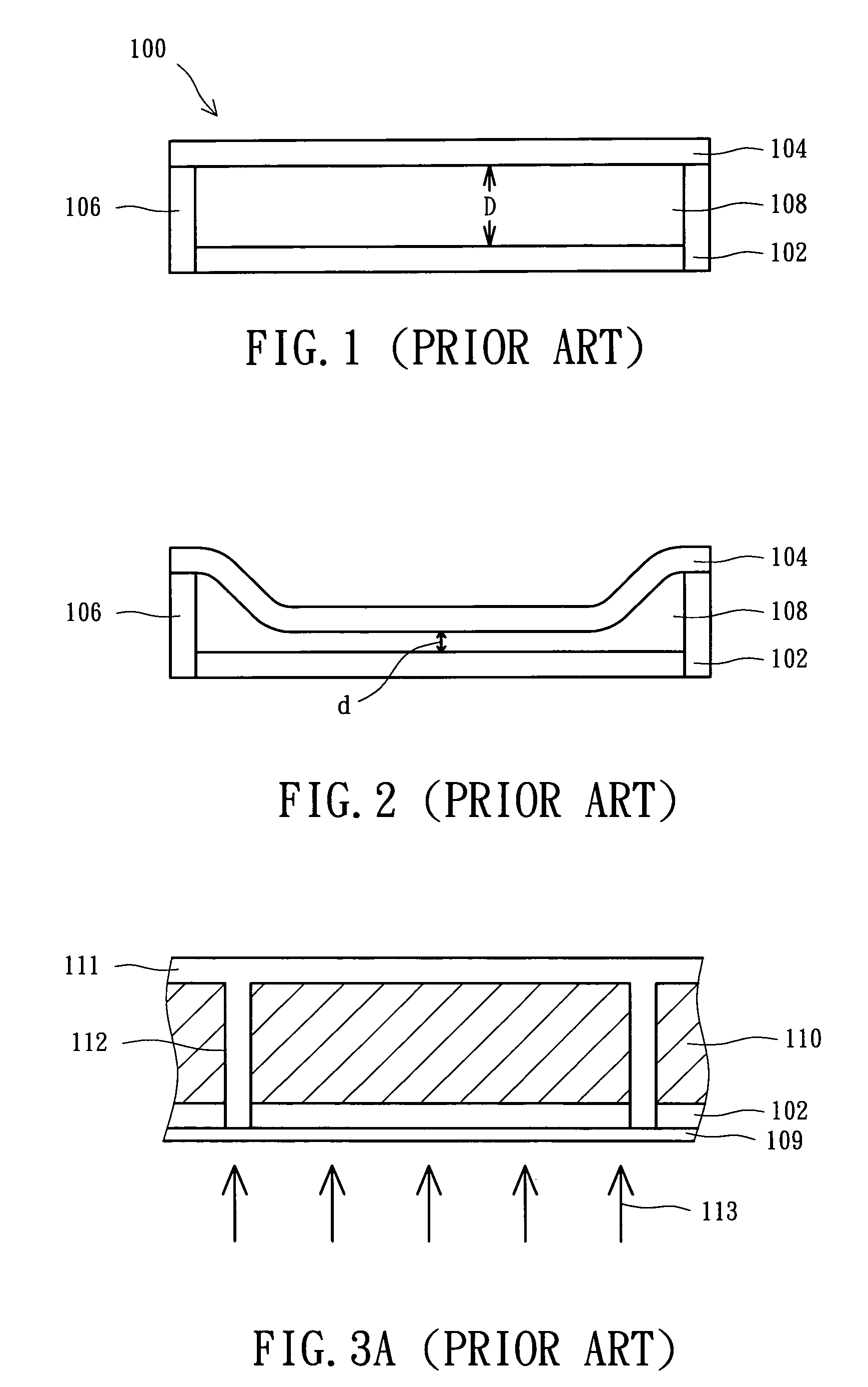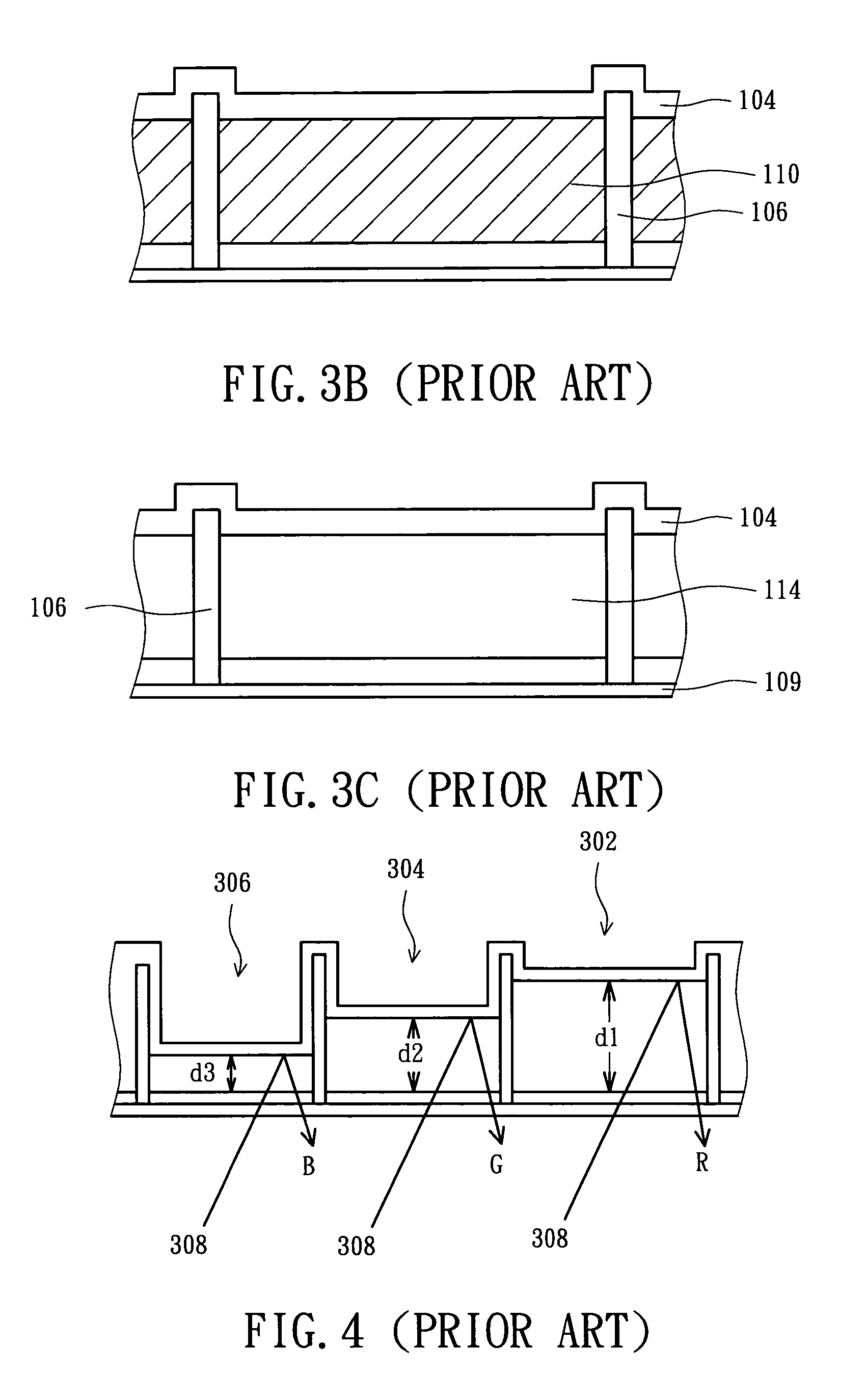Method for fabricating an interference display unit
a technology of interference display and manufacturing method, which is applied in the direction of photomechanical equipment, instruments, originals for photomechanical treatment, etc., can solve the problems of high cost of complicated manufacturing process and yield increase, and achieve the effect of high brightness
- Summary
- Abstract
- Description
- Claims
- Application Information
AI Technical Summary
Benefits of technology
Problems solved by technology
Method used
Image
Examples
embodiment 1
[0039]FIGS. 6A to 6C depict a method for manufacturing an optical interference display unit according to a preferred embodiment of the invention. Please referring to FIG. 6A first, a first electrode 502 and a sacrificial layer 506 are formed in order on a transparent substrate 501. The sacrificial layer 506 is made of transparent materials such as dielectric materials, or opaque materials such as metal materials. An opening 508 is formed in the first electrode 502 and the sacrificial layer 506 by a photolithographic etch process. The opening 508 is suitable for forming a post therein.
[0040]Next, a material layer 510 is formed in the sacrificial layer 506 and fills the opening 508. The material layer 510 is suitable for forming posts, and the material layer 510 generally uses photosensitive materials such as photoresists, or non-photosensitive polymer materials such as polyester, polyamide or the like. If non-photosensitive materials are used for forming the material layer 510, a pho...
embodiment 2
[0046]FIGS. 7A to 7D depict a method for manufacturing a matrix color planar display structure according to the second preferred embodiment of this invention. Reference is made to FIG. 7A first, illustrating formation of the first electrode 602 and a sacrificial layer 604 in order on a transparent substrate 601. The sacrificial layer 604 can be made of transparent materials such as dielectric materials, or opaque materials such as metal materials. Openings 606, 608, 610, and 612 are formed in the first electrode 602 and the sacrificial layer 604 by a photolithographic etch process, and openings 606, 608, 610, and 612 are suitable for forming posts therein.
[0047]Next, a material layer 614 is formed on the sacrificial layer 604 and fills the openings 606, 608, 610, and 612. The optical interference display unit 624 is defined by openings 606 and 608, the optical interference display unit 626 is defined by openings 608 and 610, and the optical interference display unit 628 is defined b...
PUM
 Login to View More
Login to View More Abstract
Description
Claims
Application Information
 Login to View More
Login to View More - R&D
- Intellectual Property
- Life Sciences
- Materials
- Tech Scout
- Unparalleled Data Quality
- Higher Quality Content
- 60% Fewer Hallucinations
Browse by: Latest US Patents, China's latest patents, Technical Efficacy Thesaurus, Application Domain, Technology Topic, Popular Technical Reports.
© 2025 PatSnap. All rights reserved.Legal|Privacy policy|Modern Slavery Act Transparency Statement|Sitemap|About US| Contact US: help@patsnap.com



